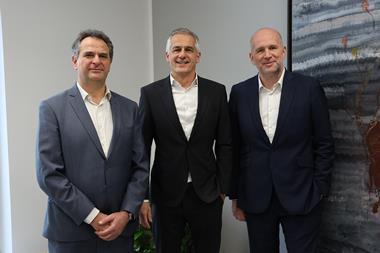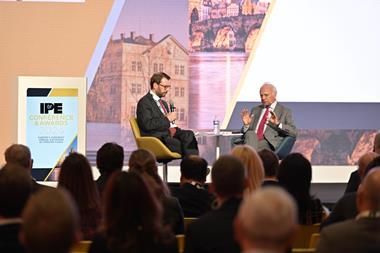The huge growth of private equity in Asia during the last five years or so does raise the issue of whether it is smart money or dumb that is driving investment flows. As Simon Faure, a director of Prudential Portfolio Management’s private equity fund activities points out, in many Asian markets there has been no proof that private equity actually works. Secondly, many managers have no experience of private equity, having come from an investment banking or consultancy background. “It takes time to learn about doing private equity investment,” says Faure. “Ideally managers need to have done an apprenticeship that has taken them through the highs and lows of a business cycle.”
There can also be challenges in finding a rationale for private equity in Asia. India for example, has very developed capital markets and an extreme concentration of wealth amongst a relatively few families, not dissimilar to Italy or Brazil: “Is private equity the dumb money that chases deals that no one else would touch?” asks Faure.
His worries about dumb money are most severe when it comes to China and India, which have attracted the bulk of interest and investment. As he points out, there are now 350 private equity firms in India, whilst just a few years ago there were only 30. “There were new managers appearing every month in India in 2006 and early 2007,” adds Chris Meads, who heads up Pantheon’s Asia operations. US endowments were strong backers of many of these but, as Meads found: “Many were spin-outs set up by one or two individuals from global private equity firms, or investment banks with supposed contacts. Unfortunately, it got so competitive that they ended up competing with each other even on brokered deals.” As Faure points out, when too much capital hits a market, much of it ends up overflowing from the few people who had shown demonstrable skills, to second tier and third tier firms.
For Rebecca Xu, a co-founder and Managing Director of Asia Alternatives, 2005 marked the inflexion point for private equity in Asia both in terms of the amount of capital raised and the amount of capital actually invested on the ground. The year also saw strong returns coming out of Asia deals completed in previous years. A number of growth capital deals in India and China had exited through capital markets and realised gains of multiple times the initial investment. Several high profile post-Asia crisis restructuring and buyout deals in Japan and Korea had also demonstrated attractive returns. As a result, according to Xu: “When investors saw the realised returns and an increasingly strong market momentum in Asia, they realized they could no longer ignore Asia. “Before that, when I was at the International Finance Corporation (the private sector investment arm of the World Bank Group), very few institutional investors looked at Asia private equity at all, let along having dedicated resources to track it.”
Private equity in emerging markets is essentially growth equity, not leveraged buy-outs and its attraction are, as Faure explains, not because European LBOs do not make any money: “But because growth is a constant and stable way of making money as some business can grow in both good times and bad.” But as he adds: “The biggest problem with no leverage is that unless growth rates are very high, you cannot make exits at three times the purchase price and unless you get that sort of return, you cannot justify the risks.” However, the challenge that private equity investors in Asia face is first of all identifying management teams with expertise in each sector and secondly selecting those who have the genuine ability to assist company management in executing growth.
Adding value is the critical factor that separates the smart money from the dumb. However, Pantheon has found that while everyone says they add value, very few firms actually do: “What is required in assessing companies for investment is common sense, not rocket science,” according to Meads. If a management team has come as part of a spin-out of a state owned enterprise (SOE), you cannot change the team but you do need to change the incentive structures: “The old game was to fleece the foreigners and then go off to the races with the cash with the view that they didn’t need anyone from outside telling them what to do. The big discipline that has to be applied, is the recognition that the company’s management can make good returns too if they have good corporate governance and can therefore sell or float their company. This discipline provides incentives that are more aligned with investor expectations.”
Private equity firms can also add value in operational aspects. Meads finds very few firms know how to sell their produce well, so a common fix is to introduce international talent into distribution and sales. Aureos, which focuses on small and medium sized businesses, also often finds that small companies lack access to international markets and best practice and so bring a senior person to the board, to fill the gaps according to Chairman Robert Binyon: “We also help companies expand overseas and look for foreign clients. Perhaps buy another division if they have the possibility of building market share externally.” The most common and immediate area of added value is in corporate governance. Many businesses acquired by private equity firms are family owned and can be very disorganised. As Binyon explains, it is often possible to add value by putting into place new management systems, and help at board level: “Areas like producing decent accounts and cash management, things those managers in small business have not been able to do well. Lots of small businesses go bust because they don’t know what is happening to their cash.” A view echoed by Meads, who finds that the capital base often needs to be restructured, with firms frequently financing long term projects through revolving short term credit.
For private equity investors, it is clear that to ensure they are deploying smart money and not dumb in Asia means searching for added value, a mantra that has now also become prevalent in the West.












No comments yet